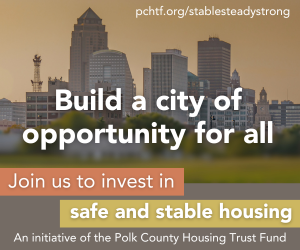Guest Opinion: Checking organizational learning disabilities

Organizations can suffer learning disabilities that prevent them from capitalizing on their experience, as Peter Senge argued in his classic, “The Fifth Discipline: The Art and Practice of the Learning Organization.”
Strategic planning develops a baseline organizational knowledge that helps leaders enhance their strengths, recognize and improve weaknesses, be agile enough to seize opportunities, and mitigate potential threats.
My passion is to see nonprofit cultural, arts, human service and public organizations thrive and contribute to the flourishing of our communities. Strategic planning is simply a process that helps us understand our organizational mandates (what we are required or expected to do by our stakeholders), understand the market in which we operate, identify what we must do to meet performance expectations, clarify and prioritize our strategic issues, and then create a path to move us into a new future. Strategic planning can also show us the assets we may have overlooked, such as our unique advantages, community relationships, and potential donors, collaborators and partners.
Organizational planning often seems like a luxury to the nonprofit, easily crowded out by the demands of making payroll, winning that crucial grant and maintaining stakeholder engagement. Yet the learning gained in strategic planning can produce compounded returns on the time and resources invested in the process.
Here are three key dividends of effective strategic planning:
No. 1: Strategic planning creates a baseline for organizational learning and preserves this in an actionable planning document.
This “baseline” knowledge forms a shared foundation that an organization can continually develop as it integrates new experiences and the insights gained from successes and failures. Such learning also promotes continuity as new staff, board members and other stakeholders can build on this baseline and not keep repeating the same actions because they have no way to understand what has preceded them.
No. 2: This shared learning can stimulate the engagement of staff, board members and other critical stakeholders. Simon Sinek noted that “people don’t buy what you do, they buy why you do it.” A planning process that includes the input of all the stakeholders, not just the senior leadership team, creates a shared understanding of the organization’s purpose — the “why” of what they do. People are more prone to support a plan they have had a hand in shaping than something that a small group of leaders came up with on a retreat and upon returning coaxed “buy in” from the people who do the work. Staff are more effective when they are in on the organization’s “why” and have embraced it for themselves.
No. 3: Strategic planning helps stakeholders create a desired new future instead of settling for one that will happen by default.
An effective strategic planning facilitator will help a group set goals they might not have previously considered possible. Strategy must move beyond planning and engage strategic thinking, the ability to apply knowledge in new ways and create innovative possibilities.
Strategic thinking moves beyond planning and chooses a desirable new future and then creates ways to make it reality. Without the shared learning gained in strategic planning, an organization will not be able to imagine a different future, nor identify ways to move beyond current limitations.
We cannot see what we cannot understand. Good strategic planning helps move the organization across that learning gap to a new future with newly envisioned possibilities.










